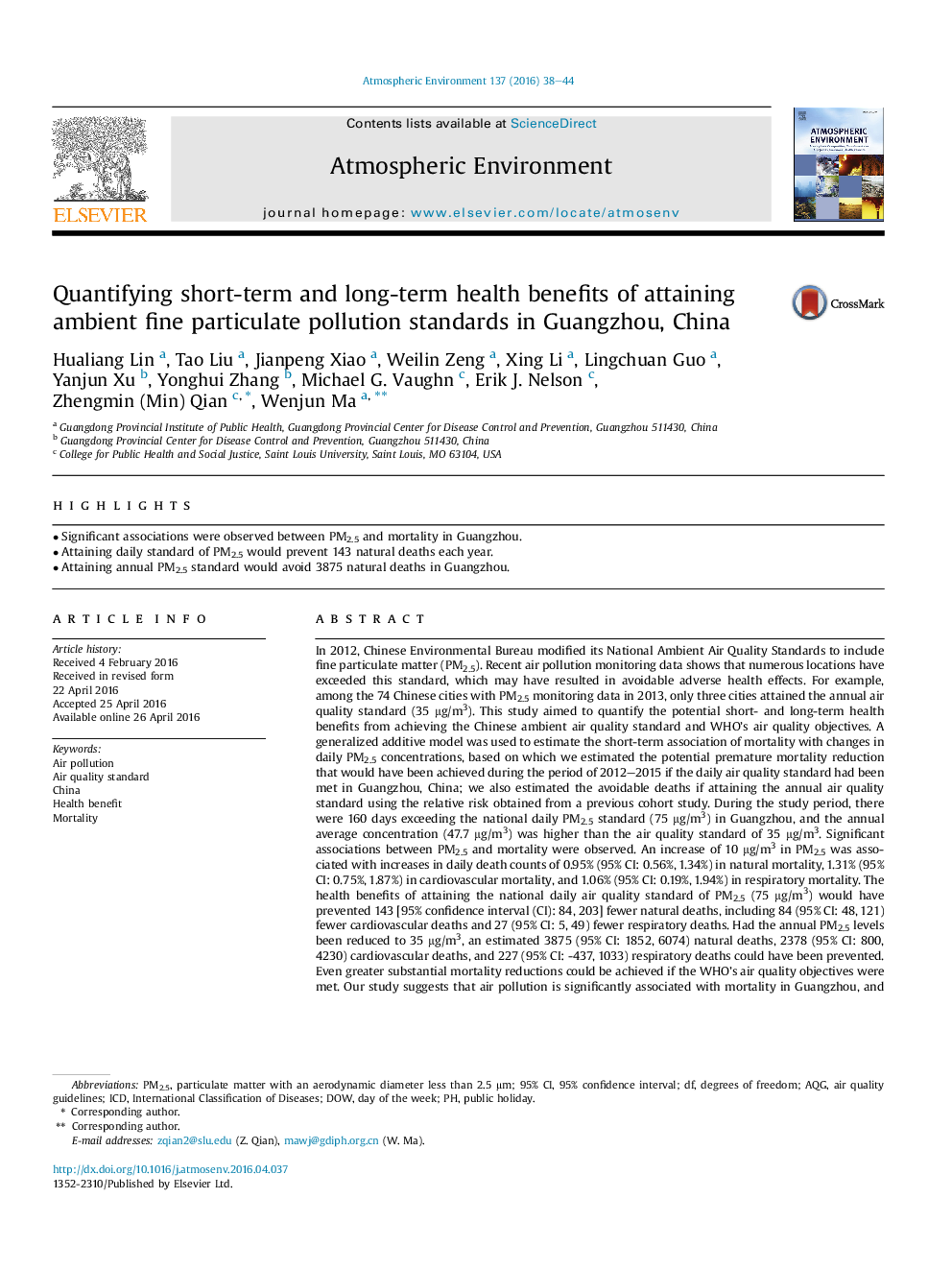| کد مقاله | کد نشریه | سال انتشار | مقاله انگلیسی | نسخه تمام متن |
|---|---|---|---|---|
| 4438044 | 1620337 | 2016 | 7 صفحه PDF | دانلود رایگان |
• Significant associations were observed between PM2.5 and mortality in Guangzhou.
• Attaining daily standard of PM2.5 would prevent 143 natural deaths each year.
• Attaining annual PM2.5 standard would avoid 3875 natural deaths in Guangzhou.
In 2012, Chinese Environmental Bureau modified its National Ambient Air Quality Standards to include fine particulate matter (PM2.5). Recent air pollution monitoring data shows that numerous locations have exceeded this standard, which may have resulted in avoidable adverse health effects. For example, among the 74 Chinese cities with PM2.5 monitoring data in 2013, only three cities attained the annual air quality standard (35 μg/m3). This study aimed to quantify the potential short- and long-term health benefits from achieving the Chinese ambient air quality standard and WHO’s air quality objectives. A generalized additive model was used to estimate the short-term association of mortality with changes in daily PM2.5 concentrations, based on which we estimated the potential premature mortality reduction that would have been achieved during the period of 2012–2015 if the daily air quality standard had been met in Guangzhou, China; we also estimated the avoidable deaths if attaining the annual air quality standard using the relative risk obtained from a previous cohort study. During the study period, there were 160 days exceeding the national daily PM2.5 standard (75 μg/m3) in Guangzhou, and the annual average concentration (47.7 μg/m3) was higher than the air quality standard of 35 μg/m3. Significant associations between PM2.5 and mortality were observed. An increase of 10 μg/m3 in PM2.5 was associated with increases in daily death counts of 0.95% (95% CI: 0.56%, 1.34%) in natural mortality, 1.31% (95% CI: 0.75%, 1.87%) in cardiovascular mortality, and 1.06% (95% CI: 0.19%, 1.94%) in respiratory mortality. The health benefits of attaining the national daily air quality standard of PM2.5 (75 μg/m3) would have prevented 143 [95% confidence interval (CI): 84, 203] fewer natural deaths, including 84 (95% CI: 48, 121) fewer cardiovascular deaths and 27 (95% CI: 5, 49) fewer respiratory deaths. Had the annual PM2.5 levels been reduced to 35 μg/m3, an estimated 3875 (95% CI: 1852, 6074) natural deaths, 2378 (95% CI: 800, 4230) cardiovascular deaths, and 227 (95% CI: -437, 1033) respiratory deaths could have been prevented. Even greater substantial mortality reductions could be achieved if the WHO’s air quality objectives were met. Our study suggests that air pollution is significantly associated with mortality in Guangzhou, and more stringent air quality standards would significantly reduce air pollution-related premature mortality.
Journal: Atmospheric Environment - Volume 137, July 2016, Pages 38–44
